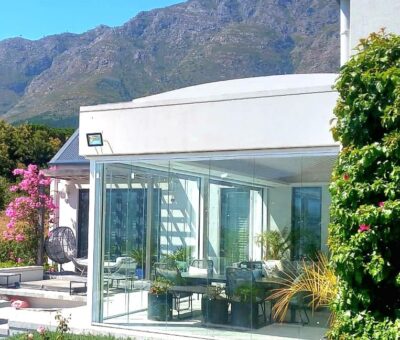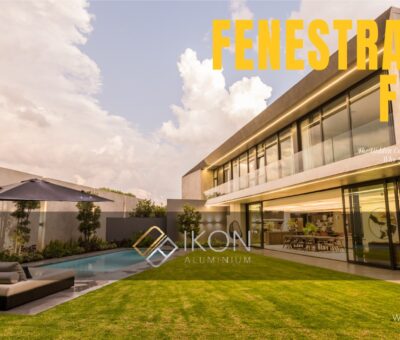Swartland: Your Guide to A Full Fenestration Renovation
Installing new windows can make a big difference when renovating your home. Besides improving your home’s aesthetics, it can also enhance the functionality and comfort of your abode. We chatted to Cobus Lourens from leading window and door manufacturer, Swartland, about the things to consider during a fenestration reno.
As a start, there are two major factors that you need to consider, namely:
- Appearance: Look for windows that capture the look you wish to achieve. Do they suit the style of your house, and do they open and close the way you want them to?
- Energy efficiency: All Swartland’s windows are SANS 613 certified and compliant. They have all been tested for deflection, structural strength, water-resistance, air-tightness, operating forces, and the best possible energy efficiency.
Cobus advises that the easiest way to select windows that deliver on both appearance and performance, is to follow these three easy steps:
- Choose your style
The size and aesthetic look of windows are quite straightforward decisions to make. However, it is imperative to consider the operating style as well. Cobus explains: “The operating style is the way your windows will open and close. It not only has an effect on the functionality of the windows themselves, but also impacts on their energy efficiency.” Here’s an overview of the various types of window styles you can choose from:
- Fixed: A fixed window is basically a casement or awning window that doesn’t open.
- Slider: The slider window has one or more sashes that slide open horizontally.
- Sliding sash: With a bottom sash that slides up, the sliding sash window allows controlled airflow into your home.
- Picture: Like fixed windows, picture windows do not open. It is best if they offer a low-profile frame to maximise the glass surface, allowing for vast and uninterrupted views.
- Casement: Hinged on the side, casement windows swing outwards like a door, providing excellent air circulation in your home.
- Bay: Made up of a combination of windows attached at an angle, these windows extend beyond the wall to open up and enlarge the room in question.
- Awning: An awning window is a casement window that is hung horizontally. Hinged on top, it swings outwards, shielding from the rain, while always providing good ventilation.
- Choose your frame material
The two most popular options are timber and aluminium:
Aluminium windows: Aluminium windows and doors, such as the KENZO range from Swartland, are best known for their exceptional durability, however, they also boast modern good looks, let in plenty of light, are exceptionally low-maintenance, and they won’t rot, mould, peel, fade or corrode. They also boast very slim profiles.
Timber windows: Nothing beats the richness and beauty of wood. If properly maintained, good quality timber windows such as those from Swartland, should last for a very long time. Although they do require yearly maintenance, Cobus recommends the use of a water-based sealant for a low-maintenance solution.
- Choose your glazing
Cobus offers an overview of the different types of glazing available for residential purposes:
- Clear float glass: This is the most basic material offering no additional performance benefits in terms of insulation or reduction in solar heat gain. It can also shatter, and may produce dangerous shards of glass if broken – it cannot be used for large format windows or doors.
- Tinted glass: Tinted glass absorbs and re-radiates solar energy, thereby reducing sun glare, heat and providing climate control. It can absorb as much as 45% of incoming solar energy.
- Reflective glass: Offering a greater level of solar control when compared to tinted glass, reflective glass is made by adding a metallic coating during the manufacturing process to create a highly reflective appearance.
- Toughened safety glass: Toughened glass is made from clear float glass that has been strengthened via a thermal tempering process. Apart from increased strength, toughened glass will shatter into small pieces, which makes it ideal for large windows and doors.
- Laminate glass: This kind of glass comprises two or more layers of glass that have been permanently bonded together with an interlayer. The lamination results in the glass panels holding together in the event of breakage, and as such it is classified as Grade A safety glass. The interlayer can be selected to deliver special performance characteristics, such as improved insulation, security, and sound insulation for example.
- Low E glass: Low Emissivity glass, better known as Low E glass, has a microscopically thin coating of metal oxide on the glass surface that allows the sun’s heat and light to pass through the glass, while at the same time, blocking heat from escaping the room. This reduces heat loss and improves insulation.
Contact: Swartland
You might also like...
-
Frameless Innovation: SpaceWorks’ Aluminium & Glass Transformations in Cape Town

For over two decades, SpaceWorks has been transforming spaces across Cape Town with precision-crafted aluminium and glass solutions. From sleek balustrades and secure gates ...
-
Silk House: An Inspo-Lover’s Guide to Curtain Longevity!

Curtains are more than window coverings; they are mood-setters, light-filterers, and the finishing touches your living space didn’t know it needed. Be Inspired with Silk ...
-
Fenster Sliding Doors

An easy, elegant indoor-outdoor flow is a top priority for many homeowners who want to make the most of South Africa’s exceptional climate. Of ...
-
IKON Aluminium™ Windows & Doors: Why Quality Matters More Than Ever

The Illusion of “Cost Savings” At first glance, choosing cheaper windows and doors might seem like a smart financial decision. Architects, developers, and homeowners often ...
























